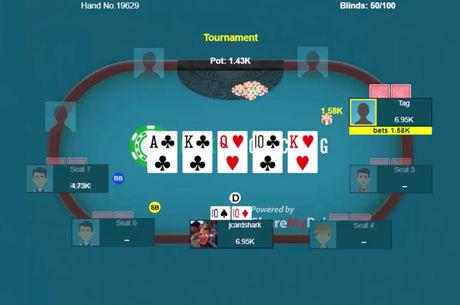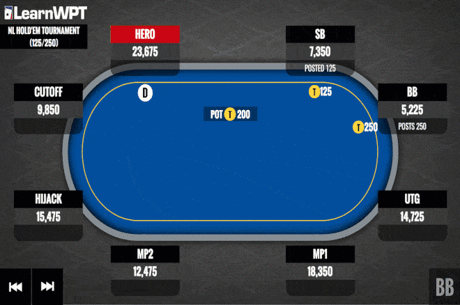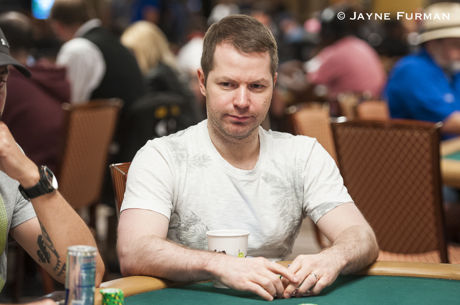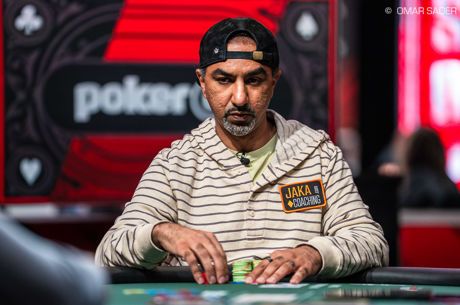Pocket Aces on the Turn: What Do You Do Here?
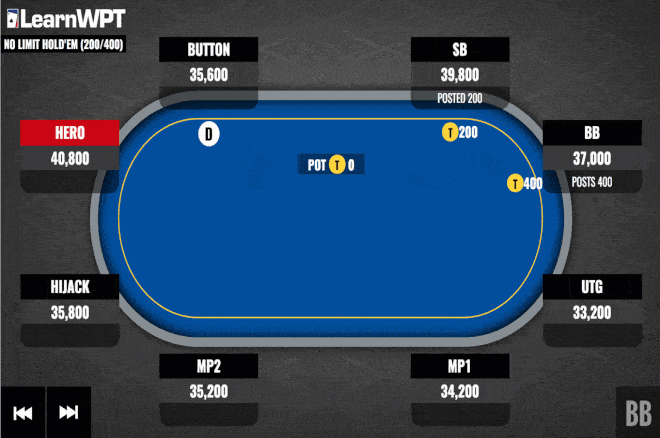
DECISION POINT: In a no-limit hold'em tournament, it folds to you in the cutoff where you've been dealt A?A? and you raise. The button, small blind, and big blind all call.
The flop comes 10?4?4?. Both blinds check and you make a continuation bet. The button folds, the small blind calls, and the big blind folds. The turn is the 2?, and the small blind checks again. The action in on you...
PRO ANSWER: After we continuation bet into three players on the flop and get called by one of them, we should generally only attempt to earn one more street of value betting with our overpair.
Against specific players on whom we have historical data, we can bet all three postflop streets for value. However, against an unknown opponent, we should only attempt to get value on two streets given this multi-way flop.
Being in position gives us the ability to control the size of the pot and potentially induce bets from worse hands on the river when we check. In addition, betting the turn puts more pressure on our opponent, since the small blind faces the implied threat of another bet on the river. This makes our opponent more likely to fold worse one-pair hands to a turn bet versus a river bet (after the turn has been checked through).
For these reasons, our default line in this hand is to check behind on the turn with the intention of calling a river bet or betting when our opponent checks. This allows us to maximize value with our pocket aces by keeping our opponent's hand range wide and getting to a controlled showdown.
Checking the turn is the best play.
LearnWPT is a poker training site dedicated to transforming the poker games of rank beginners, skilled amateurs, and aspiring professionals. Offering both Live Workshops and Online Training, is a one-stop shop for poker education, designed to provide all the tools a player needs to become a winner. Visit LearnWPT.com today and get 2 Free Strategy Episodes that will immediately impact how you play. LearnWPT.com - Think Like a Pro!

